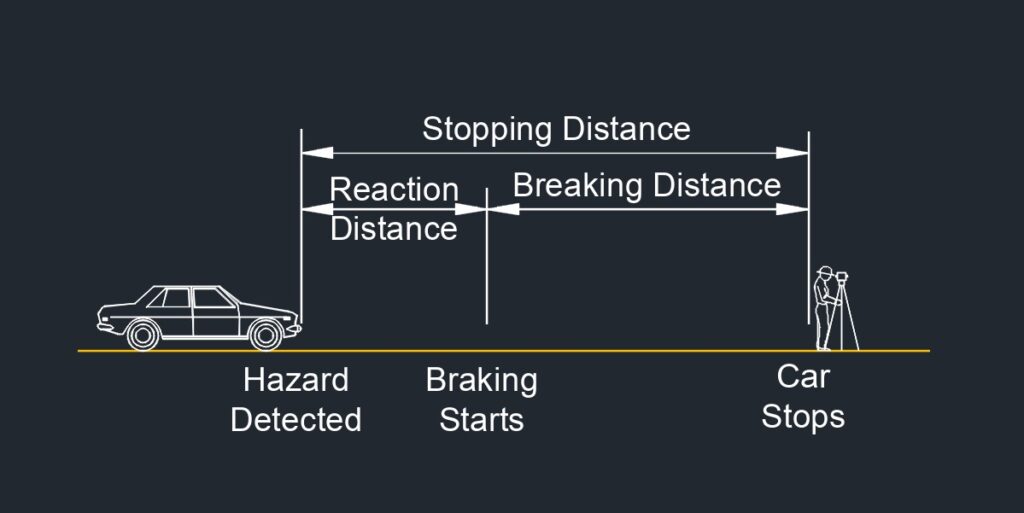The Stopping Distance Calculator will help you to calculate the stopping distance on one click. The AASHTO (American Association of State Highway and Transportation Officials) stopping distance formula is used to calculate the distance required for a vehicle to come to a complete stop. This formula takes into account several factors that influence stopping distance.
Stopping Distance Calculator
Let’s break down the components of the formula:
- s – Stopping distance in meters: This is the result you want to calculate, the distance it takes for a vehicle to come to a complete stop.
- t – Perception-reaction time in seconds: This is the time it takes for a driver to perceive a hazard and react by applying the brakes. It includes the time it takes for the brain to process information and the driver to move their foot from the accelerator to the brake pedal.
- v – Speed of the car in km/h: This is the initial speed of the vehicle before the braking begins. It’s essential to know the vehicle’s speed because it has a significant impact on stopping distance.
- G – Grade (slope) of the road, expressed as a decimal: This factor accounts for the road’s slope. If the road is uphill, the grade is positive, and if it’s downhill, the grade is negative. The steeper the slope, the longer the stopping distance.
- f – Coefficient of friction between the tires and the road: This represents how much traction the tires have on the road surface. It’s assumed to be 0.7 on a dry road and between 0.3 and 0.4 on a wet road. A higher coefficient of friction allows for better braking performance.

Now, let’s look at the formula itself:
- The first part of the formula
(0.278 × t × v)calculates the distance traveled during the perception-reaction time. This part represents the distance a vehicle travels before the driver starts applying the brakes. - The second part of the formula
v² / (254 × (f + G))calculates the braking distance. This part represents the distance required for the vehicle to stop once the brakes are applied. It depends on the vehicle’s initial speed, the coefficient of friction, and the road grade.
By adding these two components together, you get the total stopping distance. It’s important to note that this formula is a simplified model and may not account for all real-world variables, such as variations in tire quality, road conditions, and driver behavior. However, it provides a useful estimate for planning and designing roads and highways to ensure safety.
Thanks for reading the post Stopping Distance Calculator.
Read: Free Fall Calculator